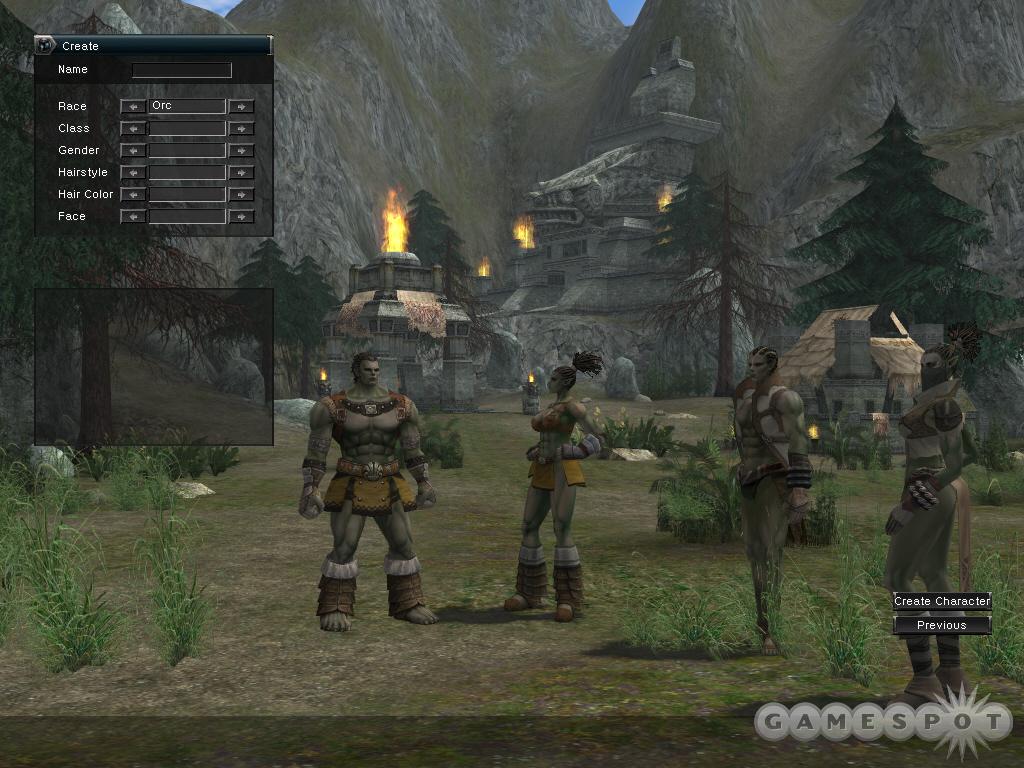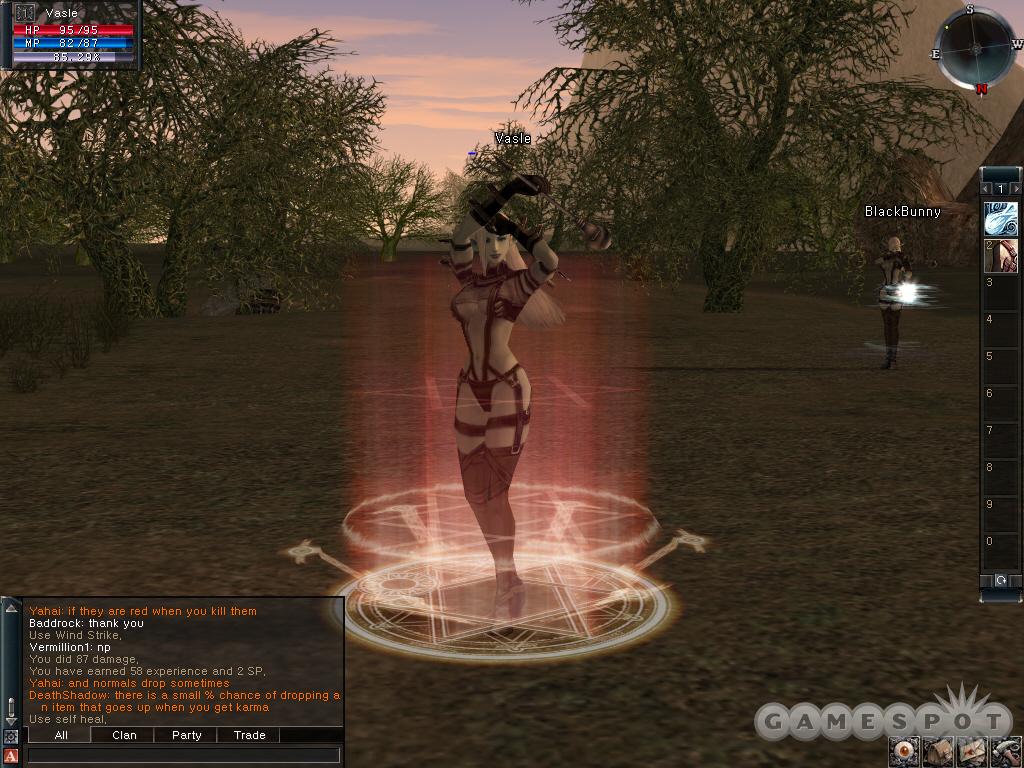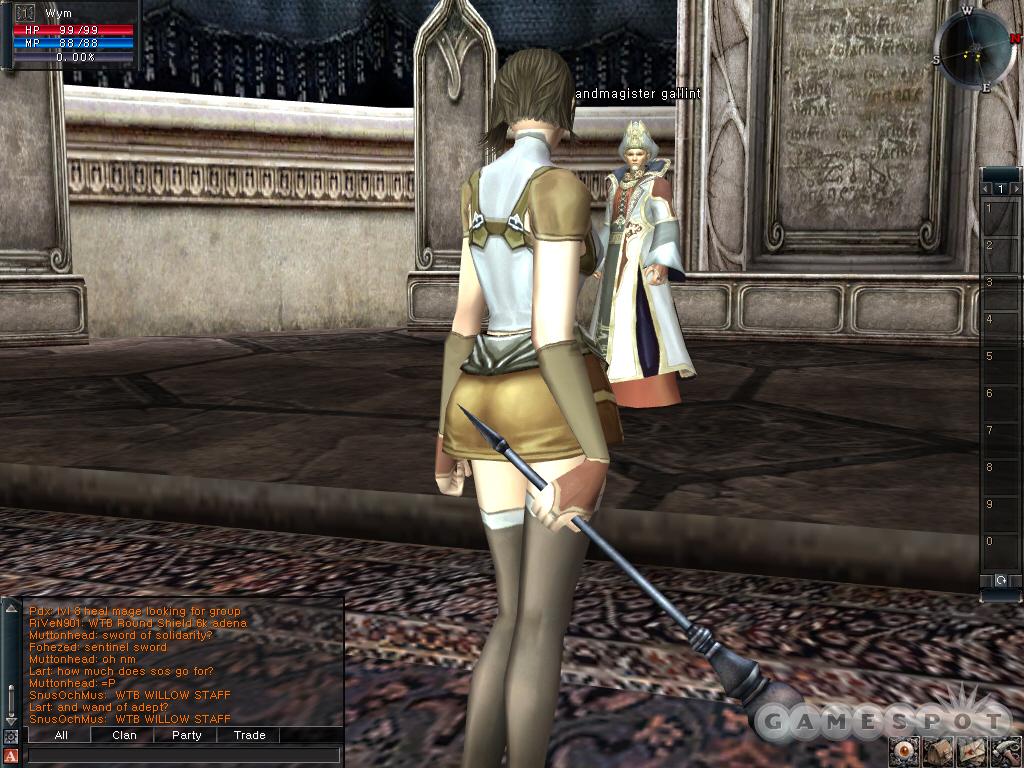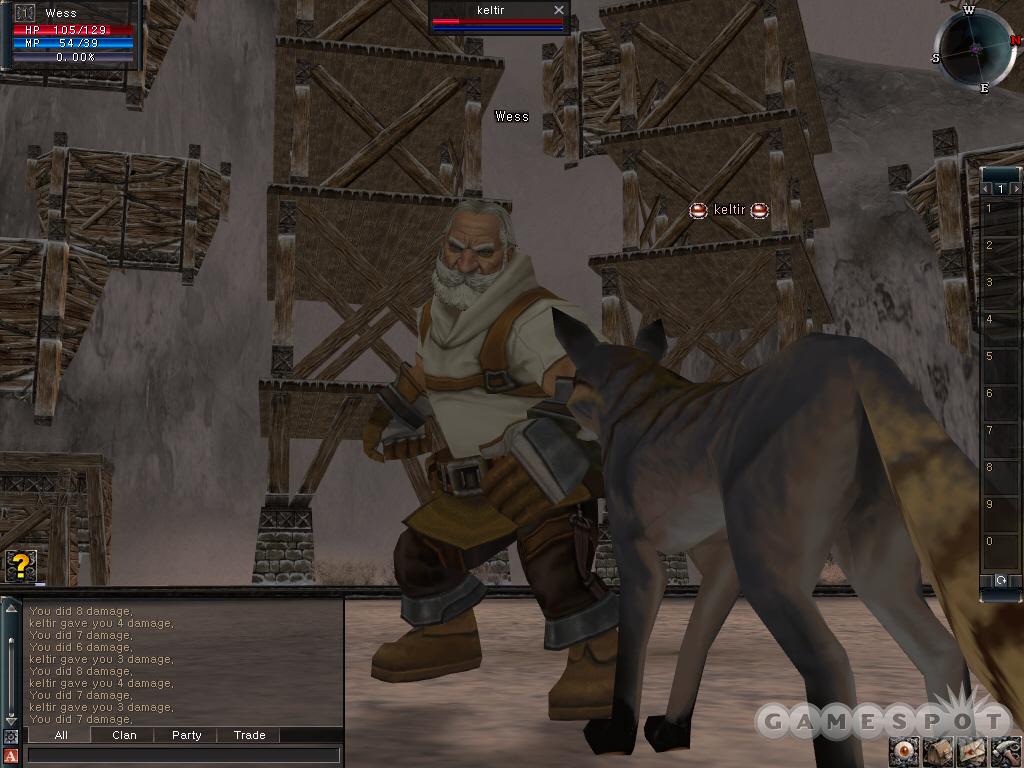Lineage II: The Chaotic Chronicle Hands-On Preview
We jump into the world of NCsoft's upcoming online role-playing game sequel.
After failing to make an appreciable dent in the US massively multiplayer online role-playing game market with Lineage: The Blood Pledge, South Korean publisher and developer NCsoft is ready to give America another go. Though you may not realize it, Lineage is reportedly the world's largest and most popular online role-playing game, with more than a million subscribers. Lineage II launched in South Korea late last year and quickly established subscription records. Lineage II: The Chaotic Chronicle is the upcoming US release of the game, and it will include the first major new content update, dubbed The Chaotic Chronicle. As we've seen from our time with the beta, NCsoft hopes to make a serious impression with American gamers this time around.
Lineage II uses the familiar high-fantasy setting found in most online role-playing games. There are five playable races, all based on traditional high fantasy, including humans, elves, dark elves, orcs, and dwarves. Naturally, each race looks and plays distinctively different from the others. Humans are the most-balanced race, while elves are weak in melee but are lightning fast. Orcs are the "tanks" of the game, so they're slow and lumbering but are powerful in combat. Finally, there are the dwarves, who aren't quick or powerful. Dwarves can't cast magic spells either, but they are the only race capable of crafting items.

The character-creation system in Lineage II is simple and straightforward. Rather than have players make a lot of decisions early on regarding their characters--only to regret them later--players will only have to decide which race and gender to play and whether to be a fighter or a spellcaster. You can also customize your appearance by choosing your hairstyle, hair color, and face. After that, character creation is finished, so you can begin playing the game. You can have up to seven different characters on your account, each of a different race and gender, so you won't be tied down by having just a single character.
When you start a new character, you'll be given the option of taking a basic tutorial. You'll begin in the heart of your race's territory, with some basic weapons and equipment, and from there, you'll be given a few basic quests to get you oriented and to let you start leveling up. Some of these involve killing a certain number of pesky animals or retrieving an object for a non-player character. Your first immediate goal is to reach level five, at which point you can train your character to both develop new skills and begin more-serious quests.
Lineage II will let you develop your character as you go along, so you can use the points you've earned to learn certain skills and abilities, like weapon mastery (which increases your attack level) and new spells. As you progress, you'll also be given the chance to change careers twice. For example, we started out as an elven fighter. At level 20, our character was allowed to become either an elven knight or an elven scout. If we chose the elven knight, then at level 40 the character could then choose again to become either a temple knight or a sword singer.

You'll be able to adventure on your own for the first five levels, but Lineage II is built around the group dynamic of player clans. You can venture out on your own, but you'll discover that the enemies will become harder to defeat. If you tackle them on your own, you'll end up resting up after each battle to recover hit points. To make things more difficult, some monsters (such as goblin raiders) travel in groups, so low-level characters won't be able to tackle them on their own without getting swarmed. But since you start at the heart of your race's territory, you should be able to find other adventurers looking to team up.
The highlight of the game will likely be its siege system. A player clan will gain control of a castle and will thus be able to wield political and economic control over a certain area. However, a clan must have its ownership of a castle contested every two weeks by holding a siege, which lets other clans attempt to take control of the castle. Both sides can enlist other clans as allies, which results in epic battles with upwards of 300 participants.
Exploring a Chaotic World
Lineage II uses a simple point-and-click interface, so you can play most of the game without touching the keyboard. Since the game is played out from the third-person perspective, you can see your character at all times. Pointing someplace and hitting the left-mouse button will cause your character to move to that point. Left-click on a person or creature and it will select them. And if you click a second time, you'll be able to talk or fight with them. Scrolling while holding down the right-mouse button will swivel the camera around, and if you need to quickly swing it back to the default behind-the-back view, all you need to do is just click the right-mouse button. Finally, the scrollwheel lets you zoom in and out, and clicking on it switches to a reverse-angle view so that you can see the front of your character. This is helpful when you're running away from something, and you don't want to risk stopping to turn around.

The designers have pushed the interface to the periphery of the screen, thus giving you as clear a view as possible. It's semicustomizable, so you can move certain elements around to switch their orientations. There's also a hotkey toolbar of empty, numbered slots, so you can drag icons representing items and actions into them so that you don't have to fumble around the various menu screens all the time. Actions are just that--"special actions" that your character can execute. These include combat maneuvers (such as power strike), magical spells, gestures, and even the "looting" of fallen enemies. So if you want to make picking up all the loot from dead bodies easier, you can just drag the appropriate action icon into the toolbar. Then, if you want to collect loot, all you have to do is hit the corresponding function key, or you can simply click on the icon in the toolbar.
Lineage II uses the Unreal graphics engine, which means that the game is capable of rendering beautiful environments and characters. Some of the more-impressive sights in the early part of the game include the great trees that surround elven cities and the gigantic statuary of the orcs. Characters and creatures incorporate a lot of detail, and their motion is fluid and smooth. As befitting a game developed in Asia, there's a strong element of "anime" cartoons in the character design. As a result, short skirts are in vogue for most female characters, and anime-like hairstyles abound. There are also plenty of lighting effects, such as the cone of light that encapsulates your character when you level up and the soft, vibrant glow of sunlight as it bounces off of people and objects.
There is quite a bit of variation in the environments of the game. The elf city is set atop a floating island of sorts, and it features elegant architecture and soaring vistas. Given the elves' love of nature, their city is surrounded by giant trees, and the surrounding countryside is almost pastoral, if not for the hordes of creatures running about. In contrast, the dark elves live underground, so their caverns are dark and brooding. Furthermore, there's a sinister air to them, thanks to the electricity that crackles around some of their idols. Meanwhile, the dwarves live in the snow-covered mountains, where they live and mine.

Early on, we encountered wolves and other doglike creatures, which are the most basic opponents in the game. But as we leveled up, we started to encounter orcs and goblins, along with dryads and spore fungi, which are basically giant, moving mushrooms. We even caught brief sight of a humongous spider before it was put down by a party of adventurers. And one of our fellow adventurers had apparently discovered a dragon egg, which you can receive as a quest reward. The egg will bear a hatchling that will follow you around like a pet and assist you in battles. If you have access to a castle incubator, you can mature the hatchling into a strider, which is a horse-sized creature that you can ride. Eventually, the strider will mature into a flying, fire-breathing dragon, which you can also ride.
So far, the game looks like it's coming together quite well. Save for some text issues (the text wraps incorrectly, so words are broken apart), the beta test ran quite smoothly and presented no stability issues. Of course, that's to be expected, considering the game has already been up and running in South Korea since late last year. It certainly looks like NCsoft has a contender on its hands with Lineage II, since the game's beautiful graphics and clan-based gameplay should appeal to US online role-playing fans. Lineage II: The Chaotic Chronicle will launch in the US later this year.
Got a news tip or want to contact us directly? Email news@gamespot.com
Join the conversation